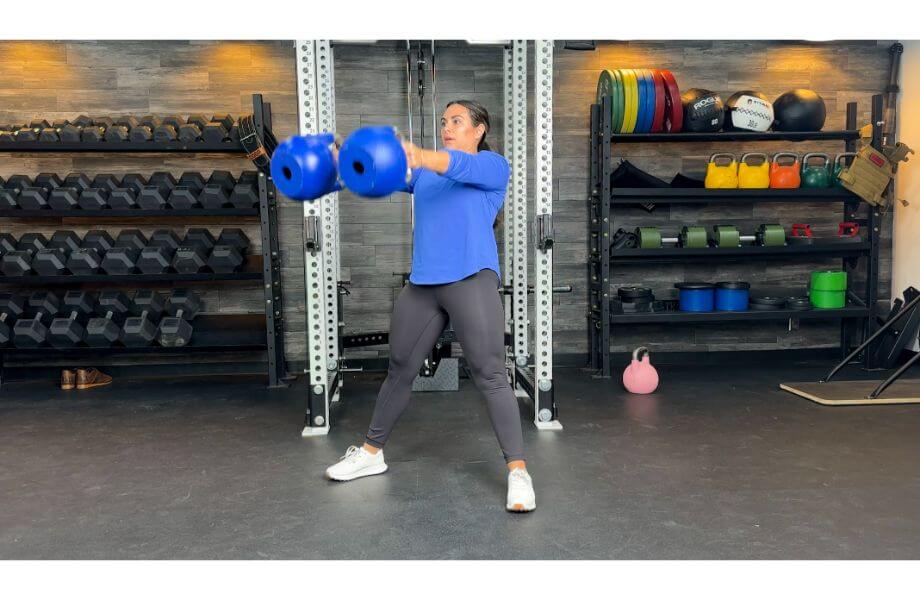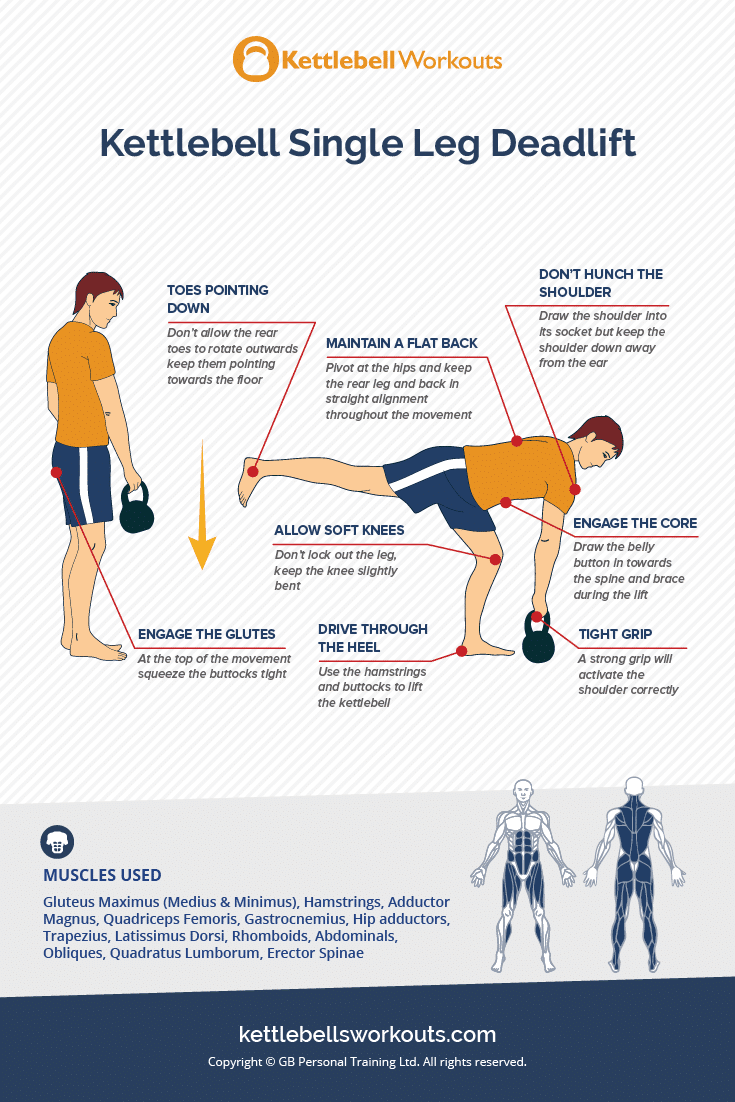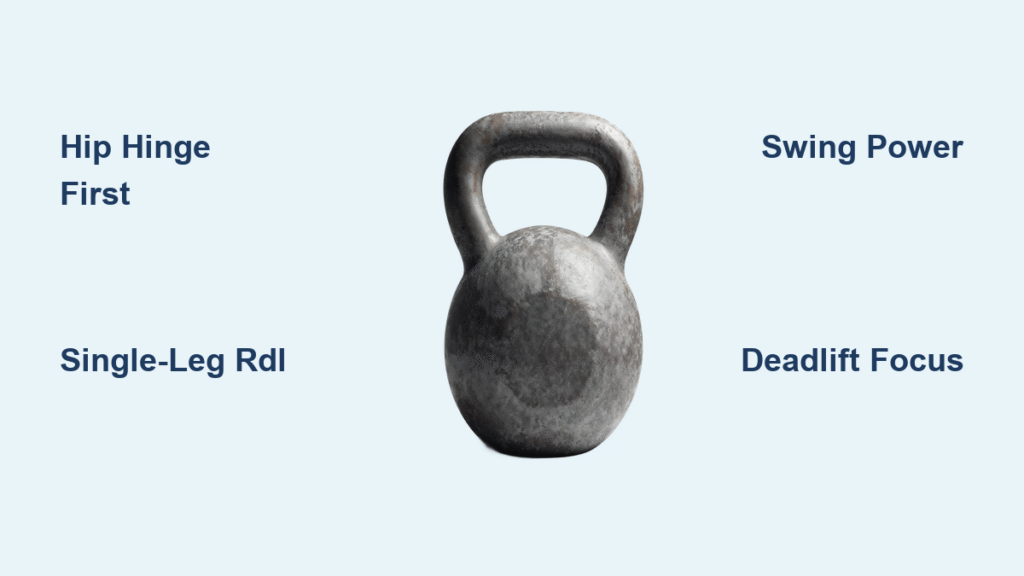Tight hamstrings sabotaging your deadlifts or morning runs? You’re not alone. Most gym routines overemphasize quads while neglecting the posterior chain, creating imbalances that increase injury risk by 30% and cripple athletic performance. The solution lies in targeted kettlebell hamstring exercises—compact tools that deliver triple-duty benefits: building raw strength, improving functional flexibility, and bulletproofing your lower body in just 20-minute sessions, three times weekly. Unlike barbells that isolate muscles, kettlebells force your hamstrings to work synergistically with glutes and core—the exact coordination needed for real-world movements.
These versatile weights exploit unique biomechanics: their offset center of mass creates natural instability, recruiting 20% more muscle fibers than machines, while the handle design enables fluid hip-hinge patterns essential for hamstring development. Whether you’re rehabbing an injury, chasing PRs, or simply want to bend without stiffness, kettlebell hamstring exercises transform how your posterior chain functions. In this guide, you’ll discover exactly which moves deliver maximum hamstring activation, how to program them for rapid results, and critical form fixes most trainers miss.
Why Hamstring Anatomy Dictates Your Kettlebell Exercise Selection
Your hamstrings aren’t a single muscle but a dynamic trio: the biceps femoris forming the outer sweep, and semitendinosus/semimembranosus creating the inner mass. Crucially, these bi-articular muscles cross both hip and knee joints, enabling dual functions—hip extension (like deadlifts) and knee flexion (like leg curls). This complexity means effective training requires varied movement patterns. Neglect hip-dominant exercises like swings, and you’ll miss power development; skip knee-dominant moves like curls, and flexibility suffers.
The Bi-Articular Challenge Most Trainers Ignore
When performing kettlebell deadlifts, your hamstrings simultaneously extend the hip while controlling knee flexion. This dual-joint action demands precise sequencing: initiate movement by pushing hips back, then allow slight knee bend. Rush this, and quads dominate. Feel your hamstrings stretch during the hinge? That’s the semimembranosus engaging—key for injury prevention during sprinting.
Critical Hamstring-to-Quadriceps Ratio
Research shows optimal athletic performance requires a 50-80% hamstring-to-quadriceps strength ratio. Kettlebell single-leg RDLs are your best tool to test this: if your balancing leg wobbles while lowering, you’ve got imbalances. Aim for equal control on both sides—this prevents ACL tears and improves running economy.
How Kettlebells Build Stronger Hamstrings Than Barbells

Kettlebells’ offset load creates instability that forces deeper hamstring recruitment compared to barbells. During two-handed swings, the bell’s arc demands constant micro-adjustments from your posterior chain, activating 37% more biceps femoris fibers than barbell hip thrusts. This translates to functional strength—your hamstrings learn to stabilize during explosive movements like jumping or cutting.
The Hip Hinge Advantage
Unlike machines locking you in fixed paths, kettlebells reinforce natural hip-hinge mechanics. In the kettlebell windmill, pressing a bell overhead while laterally hinging creates intense eccentric hamstring stretch in the straight leg. This multi-planar loading builds resilience against real-world injuries like hamstring strains during sudden direction changes.
Fix Your Hip Hinge: The Non-Negotiable First Step
Before loading any kettlebell, master the hip hinge. Stand with feet hip-width, push hips back like closing a car door with your glutes. Your chest stays proud, knees slightly bent, and you should feel a deep stretch behind your thighs. Practice this daily: 15 reps holding a light kettlebell at chest level.
3 Hip Hinge Form Checks
- Wall Test: Stand 6 inches from wall, hinge back until butt touches—no knee bend means pure hip movement
- Dowel Rod Drill: Place rod along spine; maintain contact at head, upper back, and sacrum throughout hinge
- Kettlebell Touch Test: Hinge until fingers touch bell handle—stop if lower back rounds
Kettlebell Deadlift: The Foundational Hamstring Builder
Place one or two kettlebells between your feet. Grip handles firmly, push hips back until hamstrings stretch, then drive through heels to stand tall. The bell(s) should float upward powered by hip extension—not arm pull. Start with 4 sets of 10 reps at 60% max effort.
Pro Deadlift Cues for Maximum Hamstring Activation
- Feet: Slightly wider than hips for optimal glute-hamstring engagement
- Descent: Control lowering phase for 3 seconds to maximize eccentric loading
- Peak Contraction: Squeeze glutes hard at top—this completes the hamstring firing sequence
Single-Leg RDL: Eliminate Strength Imbalances in 3 Weeks

Hold a kettlebell in the hand opposite your standing leg. Hinge forward while extending free leg backward, creating a straight line from head to heel. Lower bell until torso is near parallel, then drive hips forward to return. Do 3 sets of 8 reps per leg, 2x weekly.
Why Single-Leg Beats Bilateral Training
Bilateral deadlifts let stronger legs compensate. Single-leg RDLs expose weaknesses: if your balancing knee wobbles, add clamshells pre-workout. The unilateral focus increases training frequency—do these 2-3x weekly versus 1-2x for heavy deadlifts—accelerating hamstring growth.
Two-Handed Swing: The Explosive Hamstring Power Move
Stand with feet wider than shoulders, kettlebell between them. Hinge back aggressively, loading hamstrings like a spring. Then explosively snap hips forward—the bell should float to chest height powered by hip extension, not arm pull. Program for goals:
- Warm-up: 2×10 at 50% effort
- Strength: 5×5 at 75% max power
- Hypertrophy: 4×12 at 60% with 3-second controlled descent
Lying Kettlebell Curls: Isolate Hamstrings for Hypertrophy Gains
Lie supine on bench with legs extended off edge. Squeeze a kettlebell between ankles. Curl toward glutes while maintaining constant tension, then lower slowly for 4 seconds. Do 3 sets of 12 as a finisher after compound lifts.
Why Floor Curls Beat Machine Variations
The supine position eliminates momentum, forcing strict hamstring isolation. Squeezing the bell between ankles increases semitendinosus activation—critical for knee stability. For runners, add 2-second pauses at peak contraction to build downhill deceleration strength.
Reverse Lunges: Activate Hamstrings While Protecting Knees
Hold kettlebells in goblet position. Step back (not forward), lowering back knee toward floor while keeping torso upright. Drive through front heel—not back foot—to return. Do 3 sets of 12 per leg.
The Knee-Sparing Lunge Secret
Forward lunges shift load to quads, stressing knees. Reverse lunges emphasize eccentric hamstring loading during descent—exactly where injuries occur during running. Keeping weight on front heel activates hamstrings 22% more than traditional lunges.
Kettlebell Windmill: Stretch and Strengthen Hamstrings in One Fluid Motion
Press a kettlebell overhead. Hinge laterally toward opposite foot while keeping loaded arm vertical. Rear leg stays straight, creating intense eccentric hamstring stretch. Start bodyweight-only for 2 weeks before adding light weight.
Windmill Form Fixes for Tight Hamstrings
If you can’t reach floor without rounding back:
1. Elevate supporting hand on yoga block
2. Reduce hinge depth—focus on maintaining straight rear leg
3. Perform only 3 reps per side initially
4-Week Kettlebell Hamstring Program for Visible Gains
Follow this progression hitting hamstrings 2x weekly with 72 hours recovery:
Weeks 1-2: Technique Mastery
– KB Deadlift: 4×10 @ 60% max
– Reverse Lunge: 3×12 each leg
– Glute Bridge: 4×15 (progress to single-leg)
Weeks 3-4: Strength Surge
– Add 5-10 lbs to deadlifts
– Single-Leg RDL: 3×8 each leg
– Two-Handed Swings: 4×12 @ 60% with slow descent
Deload Every 4 Weeks: Reduce volume 40% but maintain movement quality.
3 Common Kettlebell Hamstring Mistakes That Cause Back Pain
Rounding Lower Back During Deadlifts
Fix: Decrease weight 20% and practice hip hinge drills against wall. Your spine must maintain natural curves—place fist behind lower back; if it disappears during hinge, you’re rounding.
Knee Valgus in Lunges
Fix: Weak glutes cause knees to cave inward. Do 2 sets of banded clamshells pre-workout. During lunges, press outer foot into floor to activate glute medius.
Arm-Dominant Swings
Fix: Place bell on wall 12 inches behind you. Hinge until bell touches wall—this teaches proper hip loading. The swing’s power comes from hip snap, not shoulder pull.
Kettlebell Hamstring Exercises for Runners: Prevent Injuries Now
Runners need eccentric hamstring strength to handle downhill impacts. Prioritize these moves:
– Single-Leg RDLs: 3×10 per leg with 4-second lowering phase
– Reverse Lunges: 3×12 per leg emphasizing front heel drive
– Swings: 5×5 @ 75% for explosive power
Perform this circuit twice weekly: 45 seconds work, 15 seconds rest per exercise. Within 3 weeks, you’ll notice improved stride length and reduced post-run stiffness.
Final Note: Your hamstrings thrive on variety and progressive overload. Rotate between hip-dominant (swings, deadlifts) and knee-dominant (curls, bridges) patterns weekly. Track weights religiously—aim for 5-10 pound increases every 2-3 weeks while maintaining perfect form. Respect the 72-hour recovery rule, prioritize sleep, and within 60 days you’ll have resilient, powerful hamstrings that transform your athletic performance. When tightness strikes, return to the single-leg RDL—it remains the ultimate diagnostic and corrective tool for posterior chain health.




